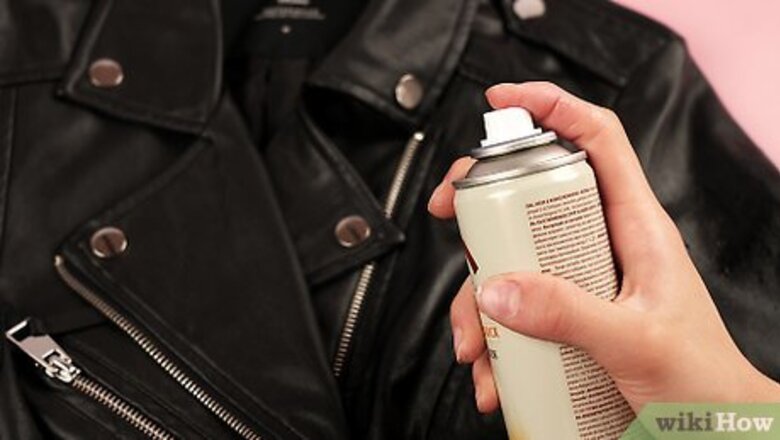
views
Maintaining a Leather Jacket
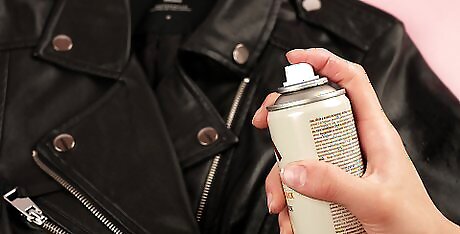
Make your leather water resistant. There are many "leather protector" or "leather waterproofing" products, but read the label carefully before buying. A silicone polymer spray or an acrylic copolymer spray should preserve your leather's appearance and shine. Grease-based or wax-based products are more protective, but not recommended for jackets due to their potential effect on color, longevity, shine, and smell. Check the label on your product to find out how long the water resistance lasts. Typically, the product needs to be re-applied once every several weeks or months. While this treatment will make the leather jacket resistant to water damage, it will not be fully waterproof, even if the treatment claims otherwise. Never immerse a leather jacket in water or place it in a washing machine.
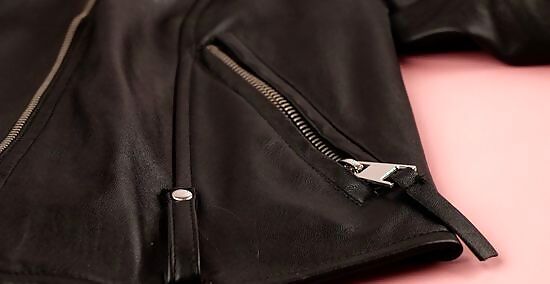
Apply leather conditioner occasionally. Rubbing in leather conditioner restores oil to the leather, preventing excessive dryness and cracking, but too much oil can clog the pores and affect the jacket's color or longevity. Only apply leather conditioner when the jacket starts to feel dry or stiff. Here are some tips for choosing a product: Check the label to make sure it is suitable for your type of leather. (This is mostly important for suede or nubuck jackets.) Ideally, use pure mink oil, neatsfoot oil, or other natural animal oils, but be aware that this may darken the leather. Products that contain wax or silicone can dry out the leather, but may be a cheaper option that causes less of a color change. Use sparingly. Never use products that contain mineral oil or petroleum, which can cause significant damage. Also avoid "saddle soap," at least on unfinished leather without a protective water-resistant coating.
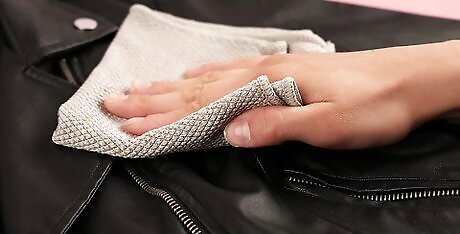
Polish smooth leather jackets on rare occasions. Leather polish will bring a shine to your jacket, but has the potential to discolor, dry out, or clog the leather surface. Use this for special occasions, and test on a hidden area first before using a new product. Buff with a cloth until a glossy surface is created. Do not polish suede or other leather with a soft, fuzzy texture. It is not possible to make suede glossy without permanently removing this texture. Don't use shoe polish, even if it is intended for leather shoes.
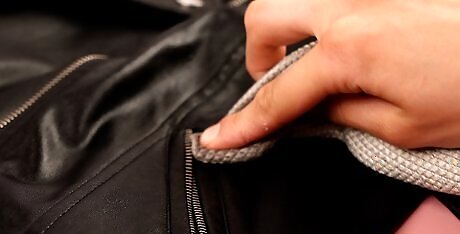
Remove salt deposits with a damp cloth. In damp winter conditions, white salt deposits can form on leather. Wipe the salt off with a damp cloth promptly, to avoid dry spots and cracks. Let the leather air dry, then apply conditioner to the affected area. Another great technique to remove salt stains is to mix white vinegar and warm water in equal proportions and apply to the leather with a soft muslin cloth dampened in the solution. If you're dealing with stubborn stains, you might need to touch up the affected area with a matching color dye or polish.
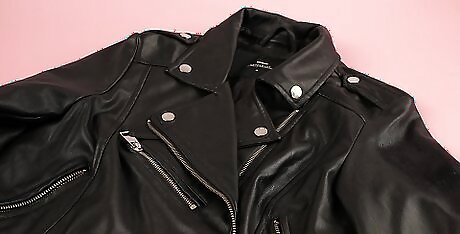
Let wet leather air dry. If your jacket gets wet, hang it evenly on a hanger to dry at room temperature. Remove objects from the pockets to avoid stretching the wet leather, and keep it away from direct heat sources, such as radiators or airing cupboards. Apply conditioner after drying, if the leather had become thoroughly soaked.
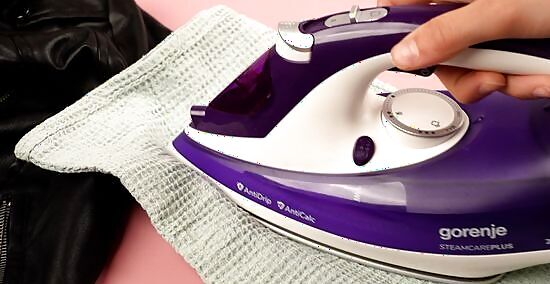
Learn how to remove wrinkles. Storing the jacket on a clothes hanger should prevent and remove minor wrinkles. If you are bothered by major wrinkles, taking the jacket to a professional leather cleaner is recommended. Alternatively, set a clothes iron to the lowest setting (often labeled "rayon"), place the leather under a cloth, and iron the cloth quickly and briefly. See the section on storage for more detailed information. You can also break in your jacket to make it softer. Since leather is malleable, it can take any shape or size after a sprinkle of water. All you have to do then is stretch it. Make sure be careful when doing that to avoid damaging the fabric.
Cleaning a Leather Jacket
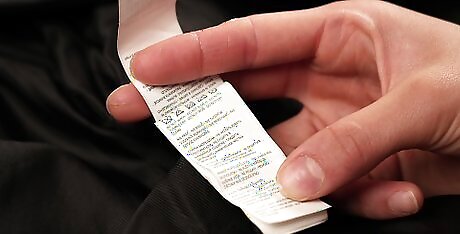
Read the tag for specific instructions. Almost all leather jackets sold in stores include a tag describing how to clean the jacket. Because there are many varieties of leather, not all of them distinguishable to the naked eye, follow the specific instructions on the label whenever possible. The steps below are generally safe if followed thoroughly, but no method is guaranteed to work safely on all leather.
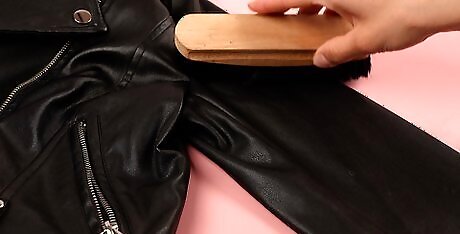
Dust the jacket with a gentle brush or cloth. If your leather jacket has been left in the closet for a while, it may need dusting. To avoid scuffing or damaging the leather, use a dry cotton cloth, nubuck cloth, or camel hair brush.
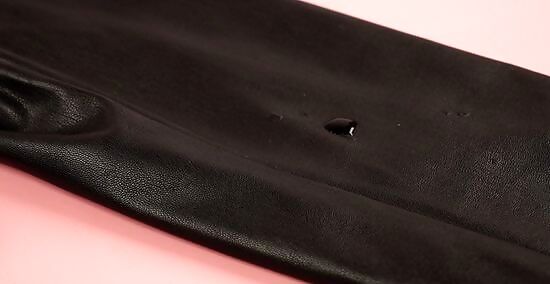
Clean finished leather with a damp cloth. Test your jacket first by dropping a single drop of water onto it. If the water stays on the surface, it is safe to wipe dirt from the leather using a slightly damp cloth. If the water is absorbed and darkens the leather, do not apply water.
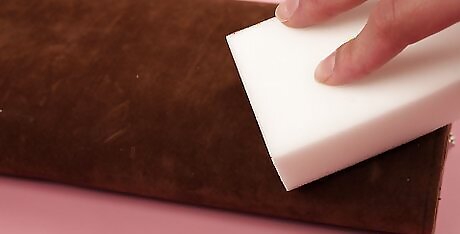
Clean suede with a specialized brush or a dry sponge. "Suede brushes" can remove light grime from suede, but may scratch other leather materials. You can try using a dry sponge as a cheaper option. Do not use this method on non-suede leather, or on unidentified leather. This may work best if you first hang the suede in a steamy bathroom. Do not apply steam directly to the suede with an iron or kettle, as heat can cause damage.
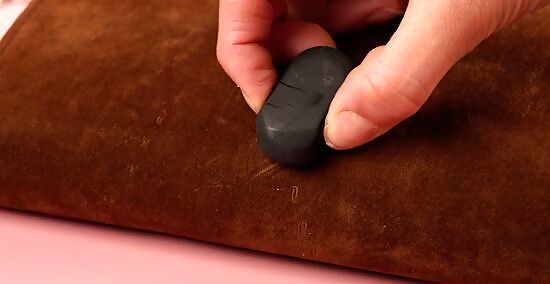
Rub an art gum eraser over grime. This method works well on suede, but test other leathers in a hidden area before use. Rub the art gum eraser over the grimy or dirty area to detach the dirt or fresh ink stains from a suede jacket. If the eraser residue clings to the jacket, remove it with a gentle vacuum cleaner or compressed air. This type of eraser is sometimes sold as "artist's eraser," and is available at crafts stores. It is a putty-like substance which crumbles apart when used. Don't confuse it with "kneaded erasers," which look similar but does not crumble.
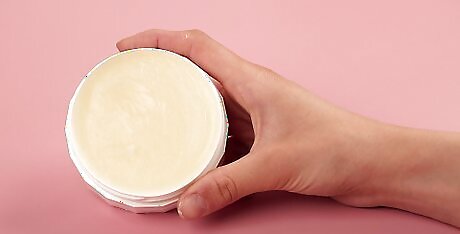
Select leather cleaning products cautiously. Only use a leather cleaning product that matches your type of leather, ideally one manufactured by the same company that made your jacket. Always test any cleaning product on a hidden area of the leather to test for discoloration or damage, leaving the product on for at least five minutes, then wiping it off with a clean cloth. If no harm has occurred, treat the affected part of the jacket according to the product's instructions. Suede or nubuck should be treated only by products specifically made for those types. Leather labeled as aniline, semi-aniline, or pigmented leather might be cleaned by a general purpose leather cleaner, but always test on a hidden area first. You can purchase ink stain remover for leather, but this is not usually 100% effective if the ink has dried.
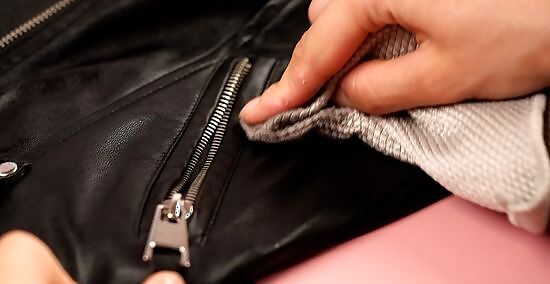
Remove mold with rubbing alcohol or mild soap. If a leather jacket is covered in mold, which usually appears as a white or grey fuzz, mix equal parts water and rubbing alcohol. Gently wipe off the mold using a cotton cloth dampened with this solution. If that is unsuccessful, try a mild, germicidal soap mixed with water instead. Wipe off excess liquid with a dry cotton cloth once you're done.

Take the jacket to a dry cleaner specializing in leather. If the above methods do not remove a stain from your jacket, take it to a dry cleaner that specifically advertises leather-cleaning services. Always ask whether the dry cleaner knows how to treat the type of leather and stain before handing your jacket over. Never wash a leather garment in a washing machine or washtub.
Storing a Leather Jacket
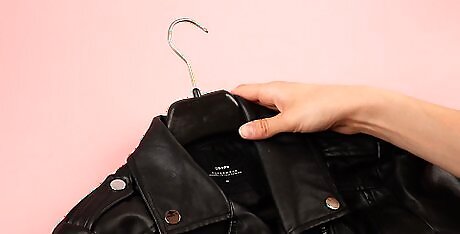
Hang on a padded clothes hanger. A wide, padded clothes hanger is the best option for minimizing wrinkles and stretch. Avoid using clothes pegs, which cause a great deal of stress to a small area.
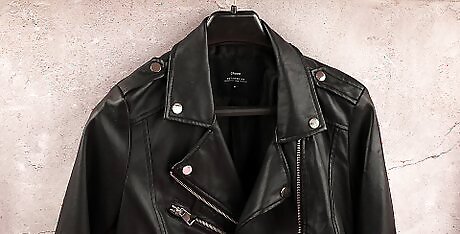
Keep away from direct sunlight and heat. Direct sunlight can fade the leather's color or cause spotty discoloration. Heat can cause dryness and cracking, so store the jacket in a cool location away from heating vents and other heat sources.
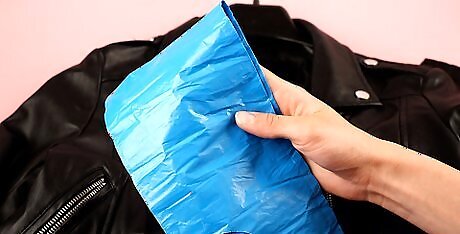
Make sure the leather can "breathe." Leather will last longer if exposed to dry air, especially a light draft. Never store leather inside a plastic bag or underneath plastic sheeting. When storing leather in a bag temporarily, open the bag whenever convenient to expose it to the air. Storing your jacket inside a closet is fine, unless the closet is unusually hot or damp.
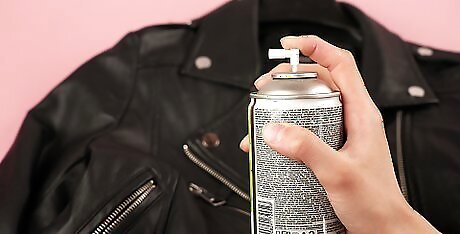
Keep leather away from pesticides. Leather can absorb insecticides. If this occurs, it may not be possible to remove the smell, or even the toxin, from the jacket. In addition, mothballs and similar home pesticides are most effective in small containers, which are not ideal homes for leather.
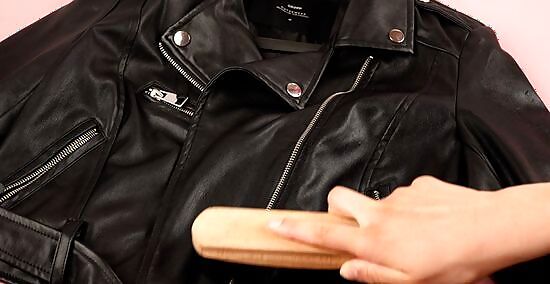
Dry clean the jacket before moving it to storage. If storing leather long-term, dry clean it first to remove any pests and odors. This reduces the chance of pests attacking your jacket, but check your storage regularly for pests if possible.


















Comments
0 comment